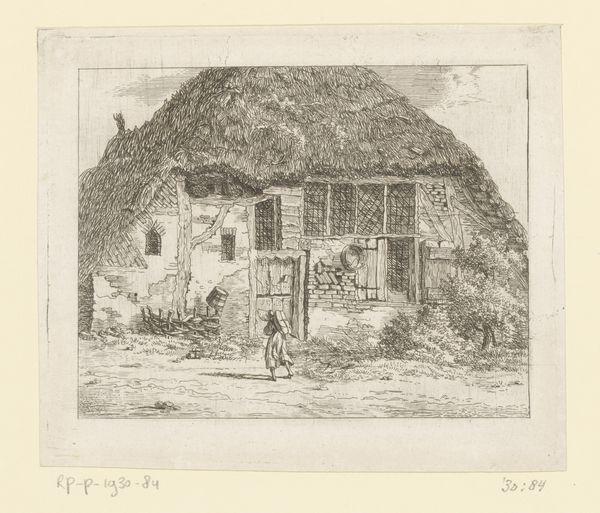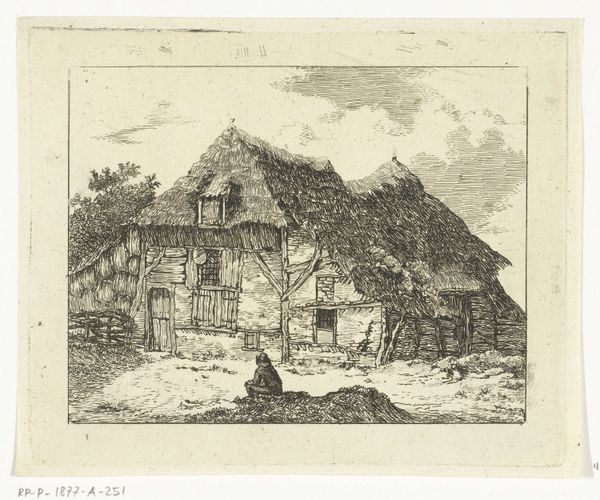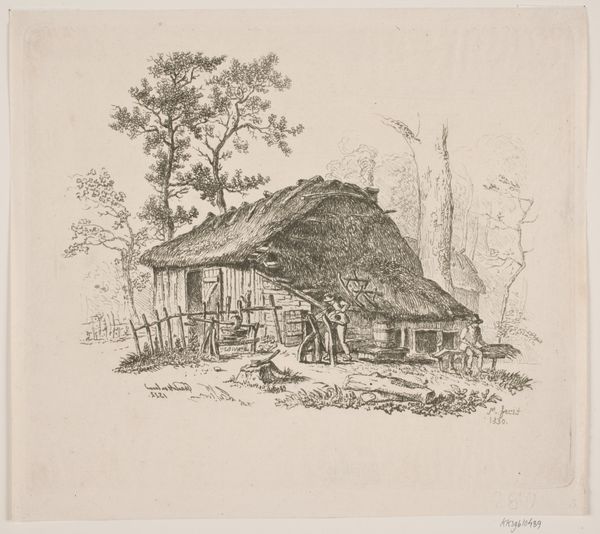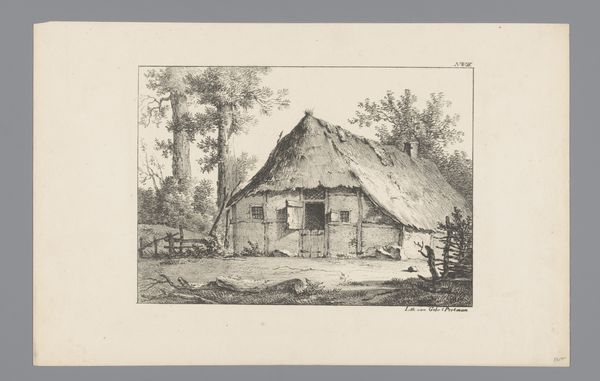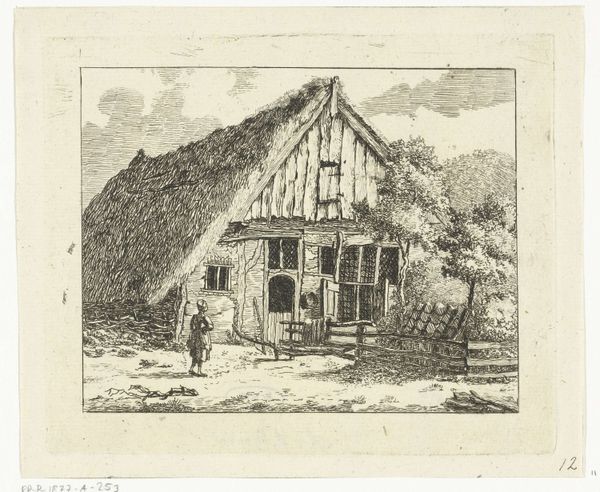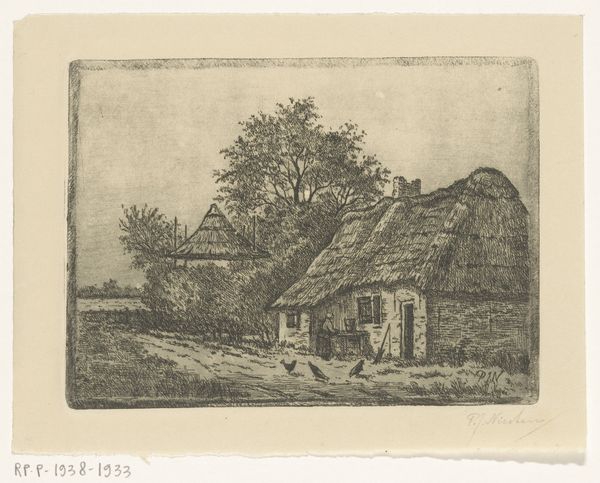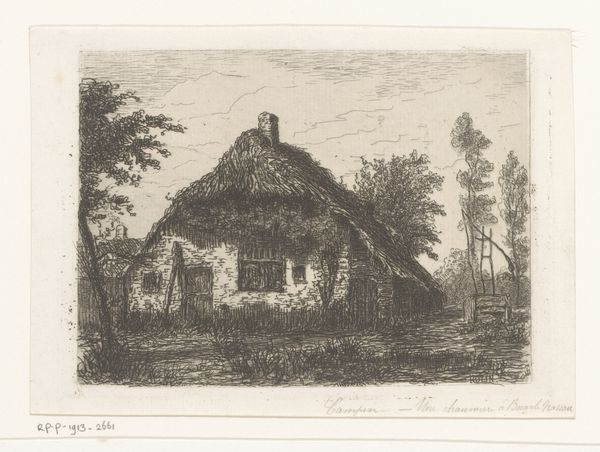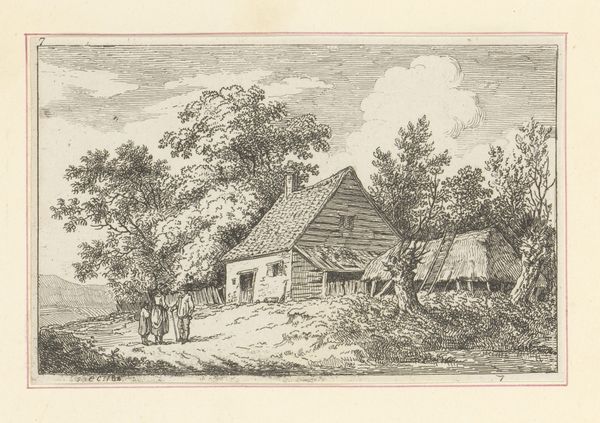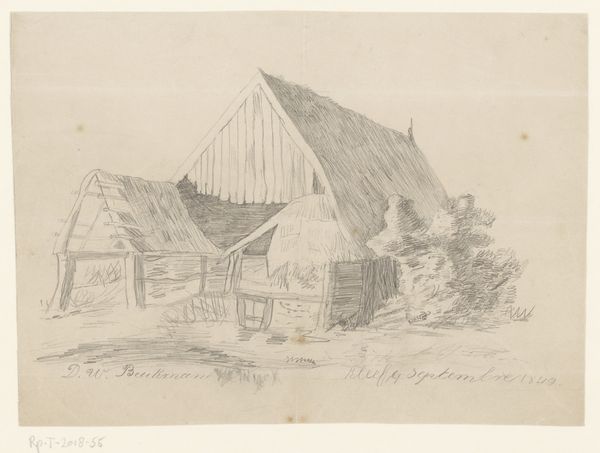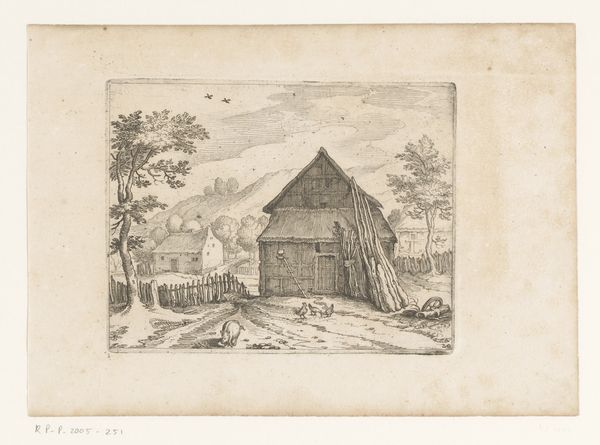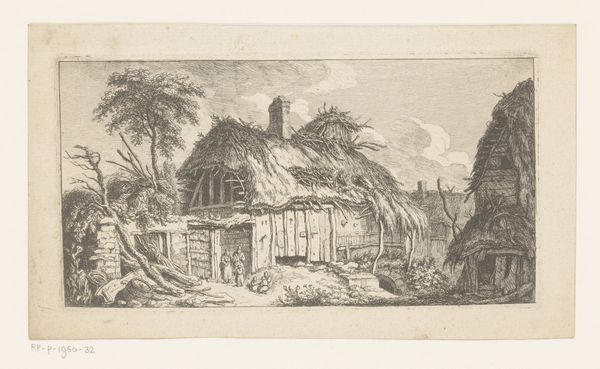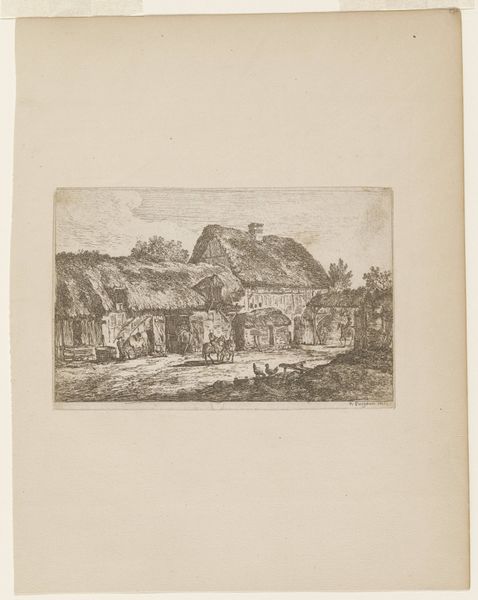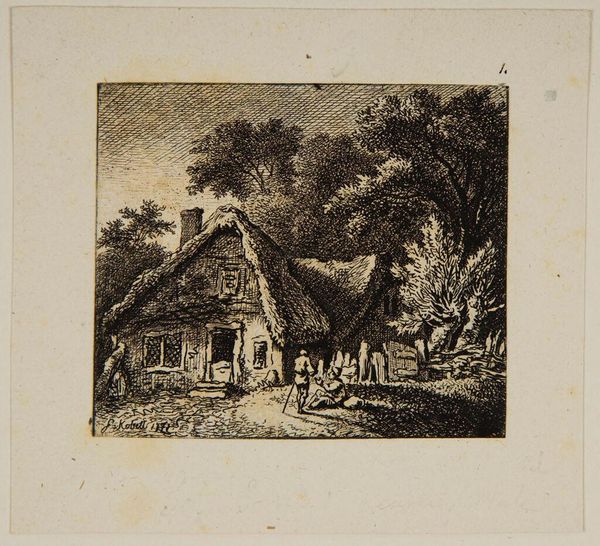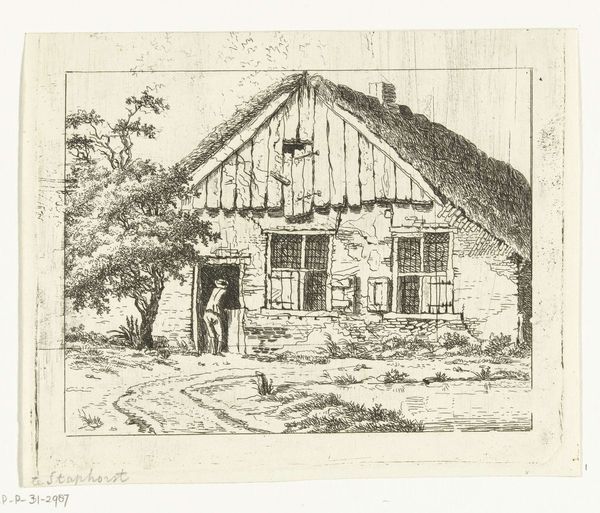
drawing, print, etching, paper
#
drawing
# print
#
etching
#
landscape
#
etching
#
paper
#
genre-painting
Dimensions: height 132 mm, width 163 mm
Copyright: Rijks Museum: Open Domain
Editor: Here we have "Man met rugzak voor een huis te Staphorst," made between 1773 and 1838 by Anthonie van den Bos. It’s an etching, a genre scene. I find the cottage quite charming, almost like something from a fairy tale. What details stand out to you? Curator: That thatch roof practically hums with ancient agrarian symbolism. Consider: Straw has long been a symbol of harvest, home, and community in rural cultures. The cottage isn't just shelter; it's an embodiment of a shared past. See how the backpack-wearing man in the foreground is smaller than the building; perhaps van den Bos is showing the diminished status of folk traditions amidst encroaching modernization. Does he seem to belong, or does he look a bit displaced to you? Editor: Displaced, definitely. His small size compared to the cottage and his backpack might mean he is wandering. Why is he separated from this scene, in our sight? Curator: Indeed. The doorway almost seems like a portal to another world. Notice those circular objects hanging near the entrance? Do they feel like simple decorations, or might they carry a deeper talismanic purpose, perhaps wards against ill fortune or markers of belonging? These rural motifs contain vestiges of communal identity that we moderns may not perceive directly, but nevertheless trigger in our memory, evoking longing and melancholia for an older simpler world. Editor: That makes so much sense! I hadn’t even considered those details might hold a specific symbolic value. So the image functions as an anchor to tradition, while also acknowledging inevitable social shifts. Curator: Precisely. And how potent those symbols are; capable of containing layers of history and personal association that shape our responses even today!
Comments
No comments
Be the first to comment and join the conversation on the ultimate creative platform.
